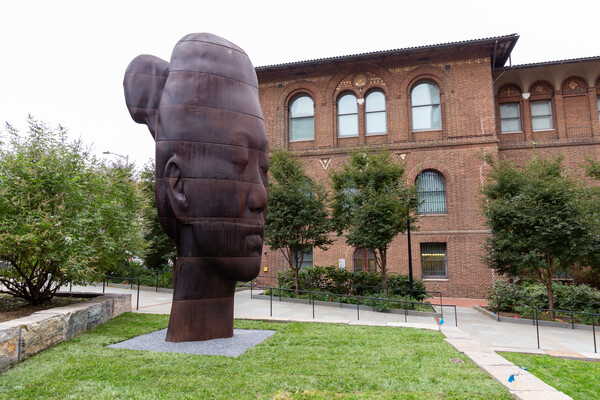
(From left) Doctoral student Hannah Yamagata, research assistant professor Kushol Gupta, and postdoctoral fellow Marshall Padilla holding 3D-printed models of nanoparticles.
(Image: Bella Ciervo)
As a Greek historian covering the archaic classical and Hellenistic periods, Jeremy McInerney has moved, over the course of his career, from a traditional political military style of ancient history into areas of cultural history. When visiting the Archaeological Museum of Argos, and as he walked in the door, in the very first display, McInerney was greeted by a striking statue of a centaur.
“It was a human being, all the way from head to foot,” says McInerney, a classical studies professor in Penn’s School of Arts & Sciences. “The horse’s section was literally stuck onto the back, where you’d have a human backside. I hadn’t seen centaurs like that before, and I became fascinated by the question of what happens when a centaur goes from being human all the way down to stopping at the waist and then becoming a horse.”
Thus began McInerney’s investigation into Ancient Greece’s love affair with hybridity, which resulted in his new book, “Centaurs and Snake-Kings: Hybrids and the Greek Imagination.” The book is an examination of hybridity and the themes and messages such creatures evoked, such as the instability of identity and warnings about trespassing against cultural mores and conventional values.
“The Greeks are already thinking about what we would call super ego, ego, and id, but they’re using different methods to explore it,” says McInerney. Centaurs, for instance, were associated with lust and excess in Greek myth. The fact they are half—or more than half human (the museum statue included human genitalia)—adds yet another layer of symbolic complexity.
Depictions of hybrids—composites of humans, animals, and/or the monstrous, ranging from Medusa to the griffin to the Pegasus—date back to Minoan culture at the end of the Bronze Age, between 1500 and 1200 BC, McInerney explains. This includes figures borrowed from Egyptian culture and the ancient Near East. “Greek historians have tried to tease out whether some of these hybrids, when repurposed by the Greeks, took on the same meaning or something totally different, and the answer seems to be no—the repurposed versions could have some totally different symbolism.”
McInerney cites Hello Kitty as a contemporary example.
“For our culture in the West, it is largely just kittens with big eyes and merchandise sold to preteens,” he says. “But in Japanese culture, kawaii, the notion of cuteness, is a really well-anchored idea that goes back hundreds of years.”
Read more at Omnia.
Blake Cole

(From left) Doctoral student Hannah Yamagata, research assistant professor Kushol Gupta, and postdoctoral fellow Marshall Padilla holding 3D-printed models of nanoparticles.
(Image: Bella Ciervo)

Jin Liu, Penn’s newest economics faculty member, specializes in international trade.
nocred

nocred

nocred